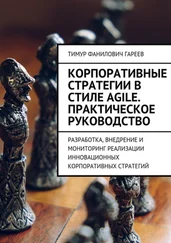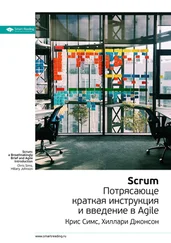The result was that thinking in the Agile community became highly constrained: the community would only tolerate ideas that either modified existing Agile practices to be more extreme or added new nontechnical practices that were also extreme. Anything else was either ignored or dismissed as “not really Agile.” So for the entire decade of the 2000s, Agile was confined largely to nontechnical thinking—an irony since Agile was created for software development.
Meanwhile, companies such as Google, Amazon, and Netflix had real problems to solve. They needed to be able to deploy to hundreds of millions of users many times a day, with confidence, and allow teams to make rapid changes and redeploy without delay. They needed agility in their software development and release processes.
So, they invented techniques to help them to achieve these things: techniques such as on-demand test environment creation, test-first integration testing (aka ATDD), containerization, container cluster management, and many other things. Jez Humble was the first who we know to have assembled these ideas into a coherent whole and publish a book about them, which he called Continuous Delivery , and the methods he described became known as continuous delivery , often abbreviated as CD. Gene Kim later wrote about CD ideas in his book The Phoenix Project .
Humble was an advocate of Agile methods and viewed himself as an Agilist, and he spoke about his work at Agile conferences. His talks were well attended, but few in the Agile community at large paid attention: what Humble was advocating was technical, so it was largely ignored by the large and growing cohort of nontechnical Agile coaches, particularly those who had built a career around Scrum. The established spokespeople for Agile—the popular Agile authors of the day—also largely ignored what Humble was talking about, preferring to pile onto the process topics that had been trending, and a few kept tweaking the now dated practices of XP. As a result, CD methods and related ideas became their own movement, which we know today as DevOps—a term that arose shortly before Humble's book was published.
The Agile community saw the rise of DevOps in the early 2010s and became alarmed. Agile was under threat from something new, so they claimed it as their own. Those who still advocated for XP claimed that DevOps was just XP in a more evolved form (not true). Agilists pointed to Humble's Agile origins but did not acknowledge that the majority of Agile coaches paid little attention to CD until DevOps rose to widespread awareness.
To be fair, there are many technical Agile coaches, even though they are a small minority. Those people indeed saw CD as continuation of the march of Agile ideas that began with XP and before. They were a fractional cohort, though.
Today if you ask an Agilist about DevOps, they usually think that DevOps is an evolution or outgrowth of Agile. That is not how it was, but it no longer matters. Agile is a set of ideas. DevOps is a set of ideas. Both sets of ideas, and many others, are extremely valuable in the context of product development.
The Introvert vs. Extrovert Problem
Earlier we posed the question, do these practices favor certain ways of working at the expense of others so that certain people benefit but others are at a disadvantage?
The group that authored the four values of the Agile Manifesto was pretty homogeneous. As we said, they were all English speaking, most were from the United States with a few from England and one from the Netherlands, all were men, and all were very experienced. They did not represent a “typical” team of programmers. It is reasonable to expect, therefore, that they had some collective biases that differ from how a typical team of programmers would feel and think.
Since most were experienced, one might assume that when they wrote that they value “individuals and interactions over processes and tools,” they were thinking of themselves as capable individuals—individuals who are highly experienced and who have refined judgment about IT methods. Such individuals arguably need less oversight—less process .
Within the principles that some of the group came up with, one of them reads, “The best architectures, requirements, and designs emerge from self-organizing teams.”
That one principle has resulted in a strong preference within the Agile community for “self-organization,” that is, a team in which there is no designated leader. The authors of the Agile Manifesto were able to come up with four values in the course of a weekend, so they clearly were able to self-organize enough to accomplish that. Would they have been able to continue to be organized over a period of months to create a complex software product?
No one can say. The principle regarding self-organizing teams has been one of the most contentious statements of the Agile Manifesto. An article by one of us in LinkedIn about self-organizing teams received 45,000 reads in the first two weeks—two orders of magnitude higher than the normal read rate for that author.
What happens if you put a group of people together and tell them to “self-organize” to achieve a goal? Well, it depends.
You will read that phrase, “it depends,” a lot in this book. We believe it is central to all of the issues pertaining to how groups of people should work together. In the words of Malcolm Gladwell, the author of Blink , the only answer that is always right is “it depends,” and that is definitely true when dealing with groups of people.
Some of the factors affecting how well a group self-organizes are:
Personalities—some personalities mix well, others less so.
Level of knowledge and experience—do they know the job well enough to get it done without supervision?
Urgency—how important is their goal? Do their lives depend on it? Or at the other extreme, is it something that someone else wants—something the team sees as inconsequential to them—and they are mere mercenaries?
Preparation—have they been trained to work in a certain way so that everyone has predefined roles?
Proven history—have they worked together before and shown that they can?
There are certainly other factors as well.
Some people work well in a group; others have trouble in a group and prefer to have their own task. The Agile community tends to dismiss the value of these “loners” or “lone wolves.” Yet lone wolves have created some of the most impactful software. Linux is an example. It was created by Linus Torvalds, who is a self-proclaimed loner and introvert. Today he still oversees the evolution of Linux, but he does so in a room by himself, communicating with the thousands of Linux kernel developers involved entirely by email. Linux powers most of today's computers, from smartphones to most of the servers in the cloud. If you use Amazon, you use Linux. If you use an Android phone, you use Linux.
Introverts tend to shy away from groups. Groups are taxing for them. In contrast, extroverts seek out groups—groups energize them. It follows then that in a team in which the prescribed form of communication is face-to-face and verbal, introverts would feel a lot more taxed than extroverts, who would actually find the frequent face-to-face discussions energizing.
One of the principles in the Agile Manifesto reads, “The most efficient and effective method of conveying information to and within a development team is face-to-face conversation.”
This seems to clearly favor extroverts. Extroverts will enjoy resolving every issue by turning around and talking to others. They would enjoy convening an ad hoc meeting to discuss the issue. According to Noa Herz, a neuroscientist and neuropsychologist, “Group meetings, in which each participant contributes thoughts in a disorganised, dominance-based manner, can put introverts at a disadvantage.” 17
Читать дальше











